Week highlights: new major releases of Blender, Open 3D Engine, OTIO, and Bespoke Synth, Cardinal is gaining momentum.
Blender 3.0
This is one of the most exciting releases in 2021. I wholeheartedly recommend watching the “Every new feature in 6 minutes” video, it provides a pretty good summary of the most important changes.
The team also shot a mini-documentary with user stories:
With 3.0, Blender enters a new LTS phase that will last 2 years. Version 3.2 with new features is expected in March 2022. The release notes is being collected here.
Blender Geometry Sketcher
I’ve just come across a Blender add-on called Geometry Sketcher, developed by GitHub user hlorus. It’s basically 2D CAD drawing tools: 2D and 3D points, 2D and 3D lines (you can easily use the latter to connect 3D points), arc, circle, and, since last week, rectangle. You can also draw on arbitrary planes.
For all its simplicity, Geometry Sketcher is based on SolveSpace’s solver (pip install py-slvs to get the prerequisite), so you get 11 types of constraint: diameter, angle, midpoint, parallel etc. Not too shabby!
I briefly discussed the project with hlorus. The developer works in the watchmaking industry and does occasional product renders, hence the interest. Regarding future plans, here is what he had to say:
When I started with BGS, I didn’t really plan ahead. The goal is not to turn Blender into a CAD application but simply to improve Blender for technical use cases which in the long term will hopefully lead to a bigger community and more interested developers in that area.
Open 3D Engine 21.11
Open 3D Foundation made the first major release of Open 3D Engine, an AAA-ready game engine originally developed as Amazon Lumberyard on top of CryEngine. Lumberyard has already been used to develop e.g. New World and Deadhaus Sonata games.
There’s this page listing features, I’ll just mention these few things:
- Apache 2.0 license, no fees
- DirectX 12, Vulkan, and Metal support in the Atom physically based renderer
- Reusable assets
- Visual scripting tool called Script Canvas, as well as Lua
For the record, the foundation has a variety of members such as Adobe, Huawei, Intel, Red Hat, Niantic, AccelByte, Apocalypse Studios, Audiokinetic, Genvid Technologies, International Game Developers Association, SideFX and Open Robotics.
OpenTimelineIO 0.14
OTIO got a new release (already switched to by at least Olive as of git master branch). Most interesting changes are:
- New file bundle adapters,
.otiozand.otiod, to collect all media in one place - New OTIO to SVG adapter to create movie cut diagrams
- The XGES adapter for Pitivi got ImageSequence support
- Python 3.6 support dropped in favor of 3.8 to follow VFX Platform changes, Python 3.9 support added
See here for the full list of changes.
Bespoke Synth 1.1.0
Ryan Challinor released a new version of Bespoke Synth. Highlights:
- All-new VST scanner/manager, and better support for large VST collections
- Massive build system improvements
- New modules: notetable, notetoggle, noteexpression
- UI tooltips is several languages (it’s kinda cool to see tooltips translatable separately in creative software with all its specific terminology)
- Various options for the background Lissajou visualizer, including the option to disable it entirely
- The output module now has a hard limiter for your own safety :)
- Lots of fixes
Here is the changelog if you want more details.
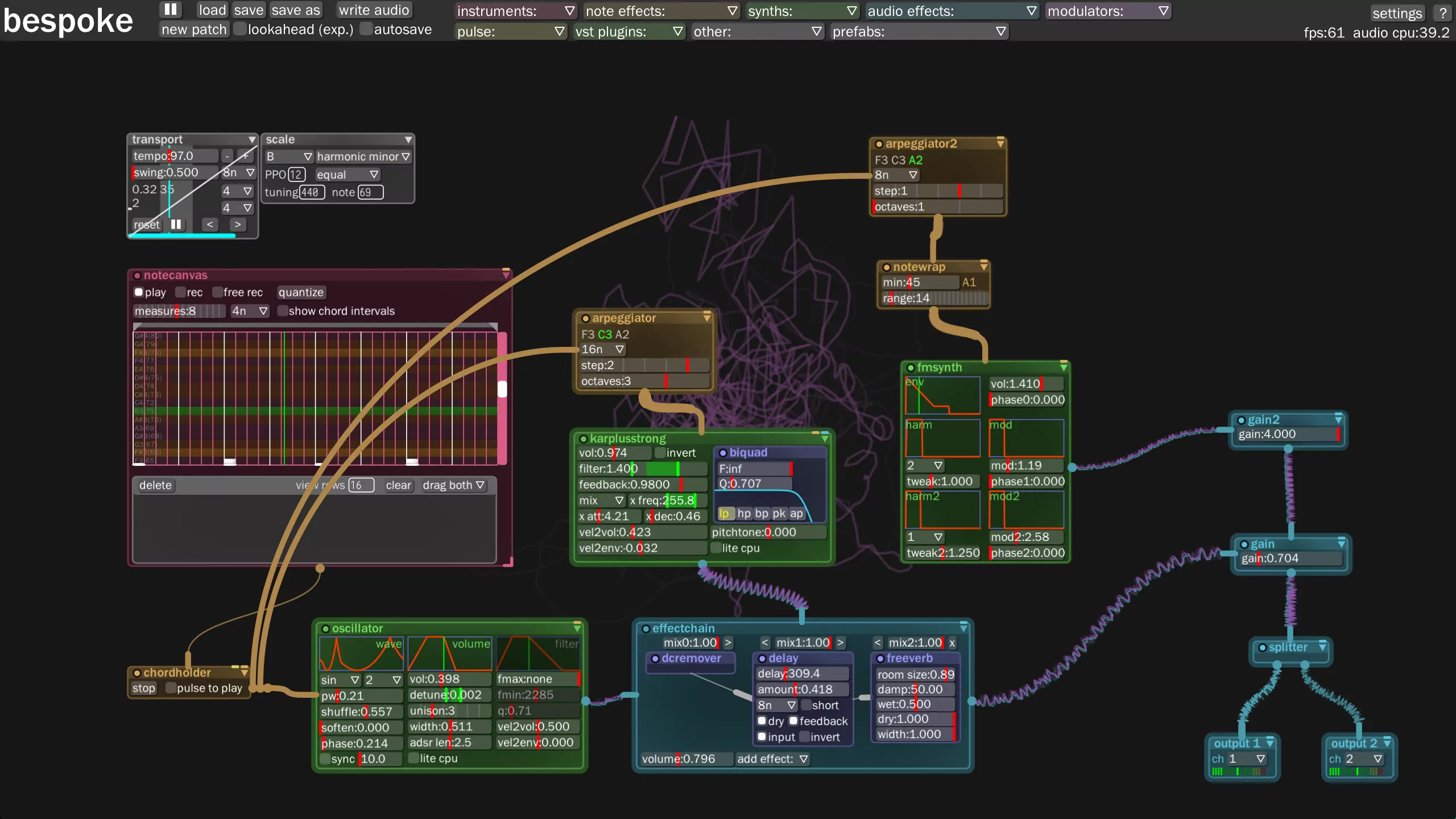
Cardinal is getting traction
Filipe Coelho created a DPF-based plugin wrapper around VCV Rack 2 to provide his own plugin version of the synth, which he called Cardinal. There have been no releases so far, it’s still an experimental project that does work nicely though.
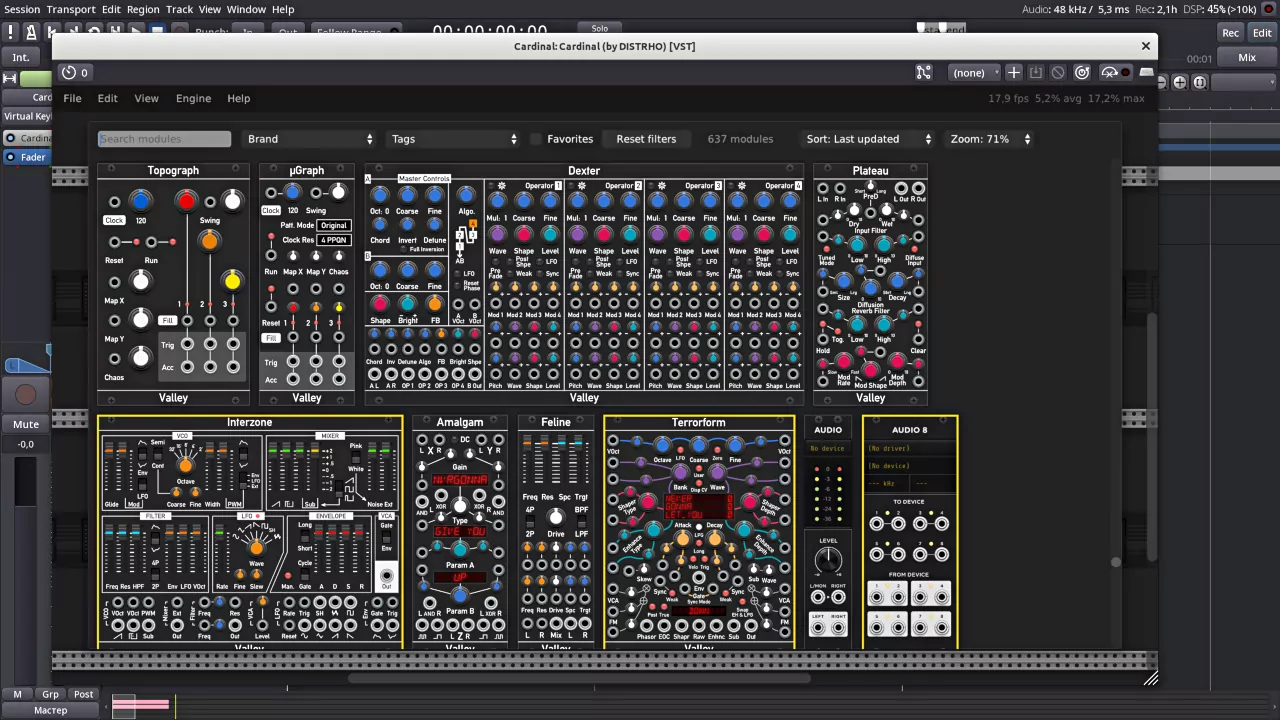
The differences are detailed here, the things I’d point out specifically are:
- Three binaries instead of one, varying in type and amount of ports (see README for details): Cardinal, CardinalFX, CardinalSynth
- VST3 and LV2 version of the plugin can be built, the former doesn’t yet work in all hosts (Ardour, for one)
- Reportedly, better performance on Linux/X11 than that of VCV Rack 2
- Modules are shipped with the binary rather than pulled from library.vcvrack.com
- Adjusted graphics to look better in dark environment
At the moment of writing this, there are 643 modules available.
I’ve spoken to Filipe about his reasoning for this project (which he vehemently claims is not a fork). My understanding is that he has no financial interest whatsoever (some people claim otherwise). Rather, the idea is to provide an alternative build that fixes major issues in the original build/setup (some of those are VST2-specific on Linux) and do some things differently in a way that’s likely incompatible with Andrew’s vision for the plugin. Filipe is also not happy with the community aspect, the CLA and the dependence on the network.
Personally, I don’t really have a strong opinion on this. I admire Andrew’s work but if Cardinal turns out to work better for me, I might go the weirdo route and pay for VCV Rack 2 Pro to support the upstream project while using Cardinal.
Meanwhile, people are starting to notice Cardinal and do fun stuff. Here is a cool hack making the synth go dark mode depending on ambient lighting:
MuseScore for guitarists
Martin Keary announced a new initiative to make MuseScore work better for amateur and pro guitarists. There are a lot of things that could be done: onboarding for tabs-specific work, better importing options etc. Some of the changes will be part of v4.0 (expected in Q1 2022), but mostly this is a long-term project.
Tutorials
Hologram shader with Blender, by Vipraz:
Quick VCV Rack tutorial by Omri Cohen:
And another one that helps building your first patch:
Artworks
For starters, here is an entire song written by Federico Cingolani with Bespoke Synth:
Then there’s a music video produced with Blender, by Albin Merle et al.:
Arctic Festival by James Curley, Krita:
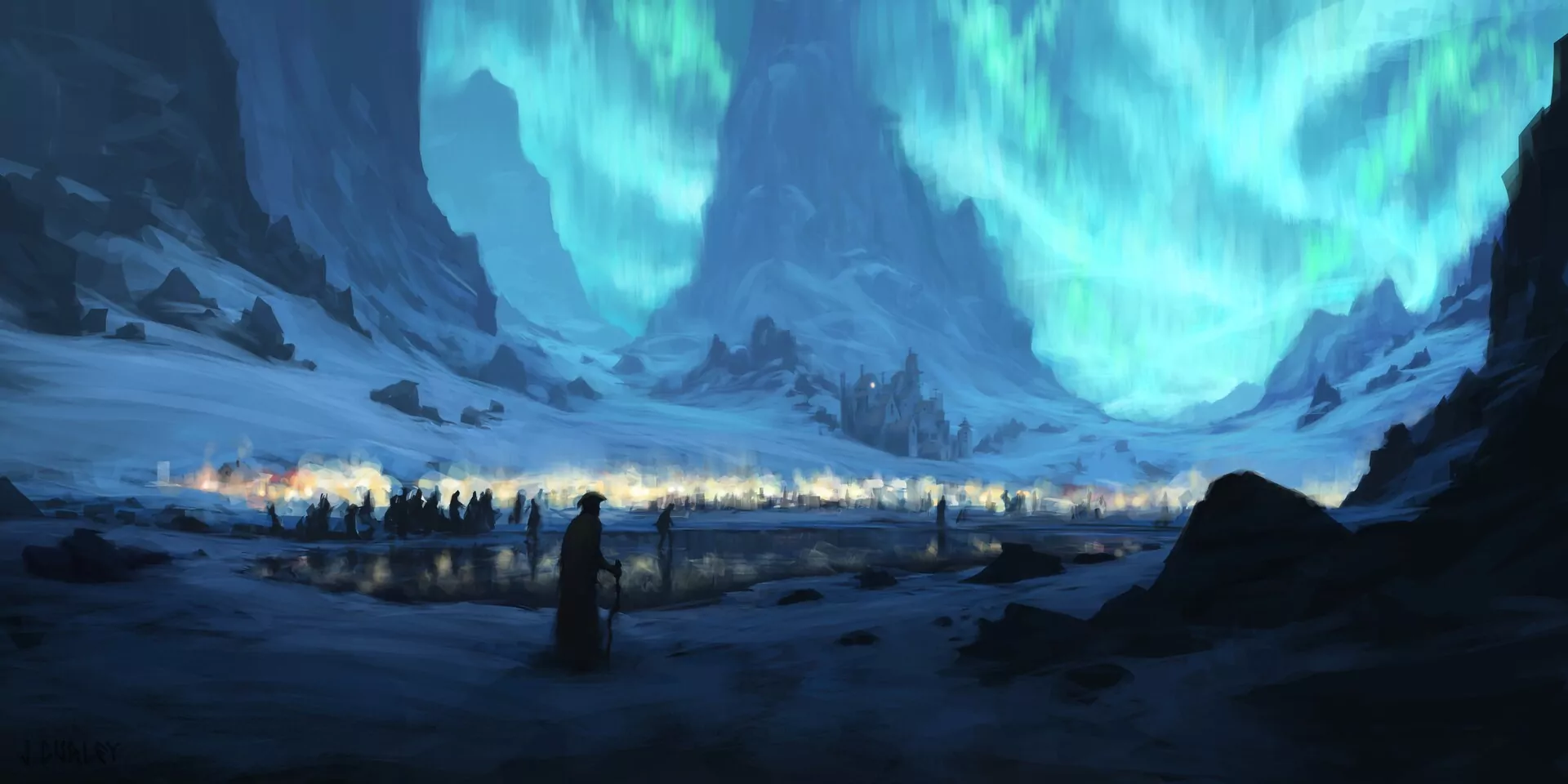
Amazingly, a Blender render called Winter in Japan, by Sonja Christoph:
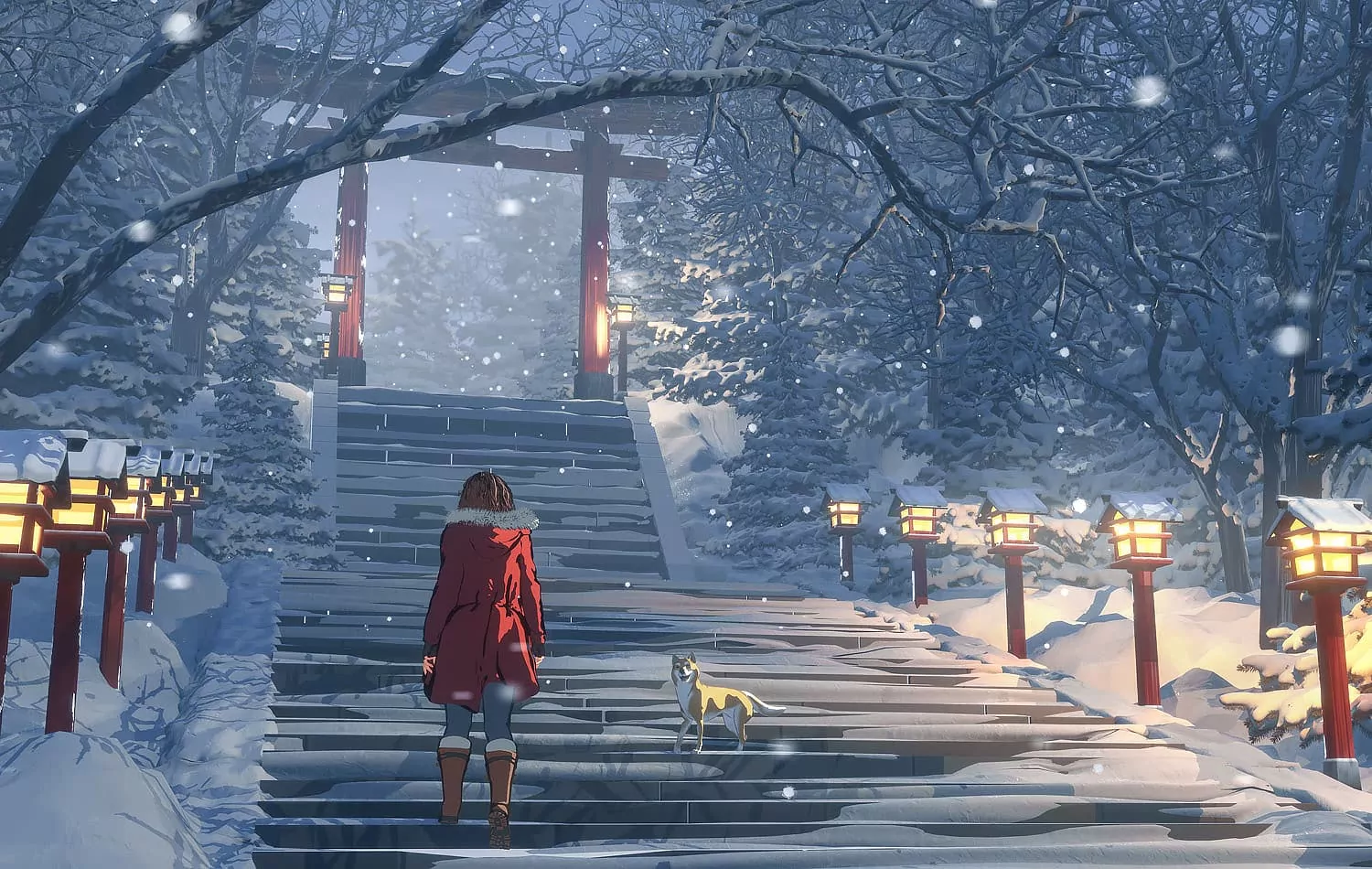
New speedpainting by Sylvia Ritter:
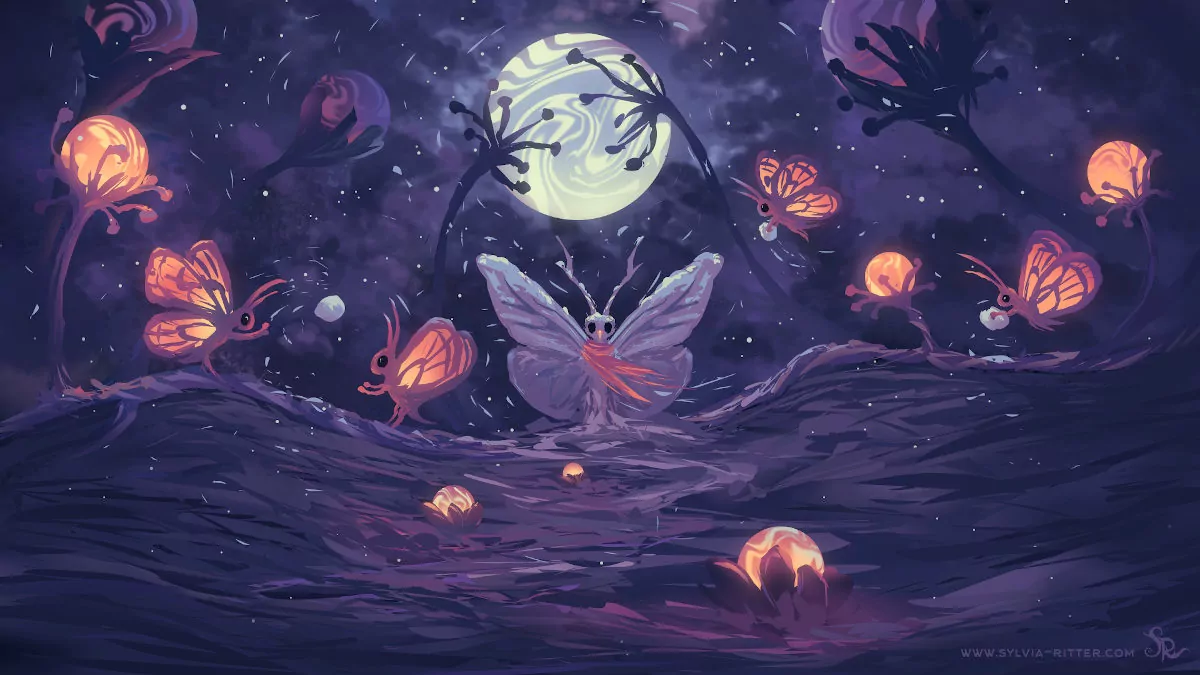
Sabertooth Guppy by Sven Ebert, Inkscape:

Patreon subscribers get early access to my posts. If you are feeling generous, you can also make a one-time donation on BuyMeACoffee.
